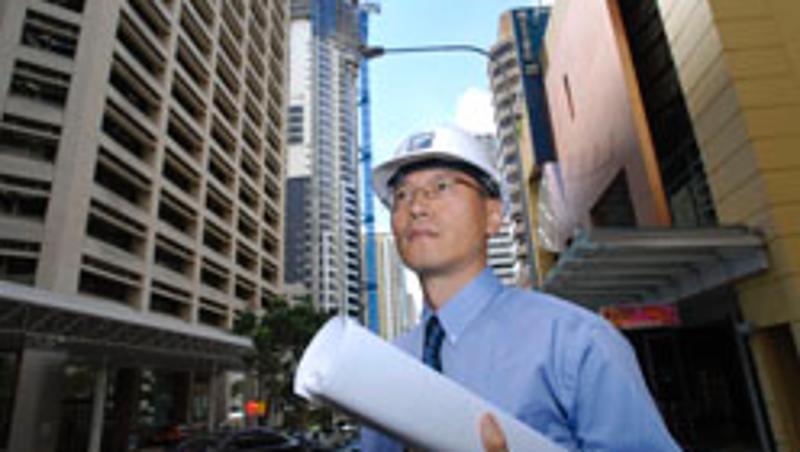
Thousands of buildings in central business districts of major Australian cities have reached "a certain age" when decisions must be made about their futures.
Queensland University of Technology Associate Professor Jay Yang, from the School of Urban Development said these ageing buildings were products of the 70s building boom.
"They no longer meet tenants' changing requirements or reached energy efficiency standards and the question is: demolish and build new or "re-life" through refurbishment," Professor Yang said.
He has addressed the dilemma by developing a tool to help building owners decide on an option, after extensive research with a national team of building industry experts and researchers from three universities at the Co-operative Research Centre for Construction Innovation, headquartered at QUT.
"We have developed a set of guidelines to test the commercial, technical and environmental viability of re-lifing projects," Professor Yang said.
"As buildings age they become more costly to run, no longer allow the functionality for today's work styles, and they can potentially make people sick.
"With the growing commitment to sustainability, improving existing building stock is an attractive option and it is estimated up to 50 per cent of annual capital budgets will go to re-lifing by the year 2020."
Professor Yang's research team studied the "re-lifing" of three 30 to 40-year-old government buildings in Brisbane, Melbourne and Sydney to bring them up to the standards of today's office operation and environmental performance.
"High construction costs, labour shortages and scarce resources and the increasing emphasis on sustainability have all been directing the attention towards "re-lifing"," Professor Yang said.
Professor Yang said different parts of buildings had different life spans.
"Whereas the building structure may last 80 to 100 years, facades date aesthetically and physically with a shorter life of 30 to 40 years, while mechanical systems such as lifts, ventilation and air-conditioning last only 20 to 30 years," he said.
"But communications and computer systems need to be changed every three years or so while the partitioning and power cabling have a life of five to 10 years.
"Because of changes to office work routines, organisational flexibility, occupational health standards, and environmental rating of buildings, each of the ageing building's elements presents challenges to building owners.
"Relifing gives the opportunity to coordinate all these aspects and to rebuild a healthier and better performing building with non-toxic material, innovative systems and maximum use of natural ventilation and daylight.
"Such upgrade to office space will help reduce vacancy rate and improve rental returns."
He said key considerations for re-lifing projects were:
- integrated analysis of market demands by building type, location and tenancy
- the optimisation of internal space to cater for changes in the way we work such as the addition of meeting rooms, common space, hot-desking, etc
- the residual service life and condition reports of the building to allow redistribution office space and services and cater for future maintenance requirements
- recycling of materials from refitting and waste management
- overall project management in terms of work scheduling around existing tenants, contractual arrangement, building procurement, on-site work organisation and improved workplace health and safety
Media contact: Niki Widdowson, QUT media officer, 07 3138 1841 or n.widdowson@qut.edu.au.
**High res pic of Professor Yang available.




